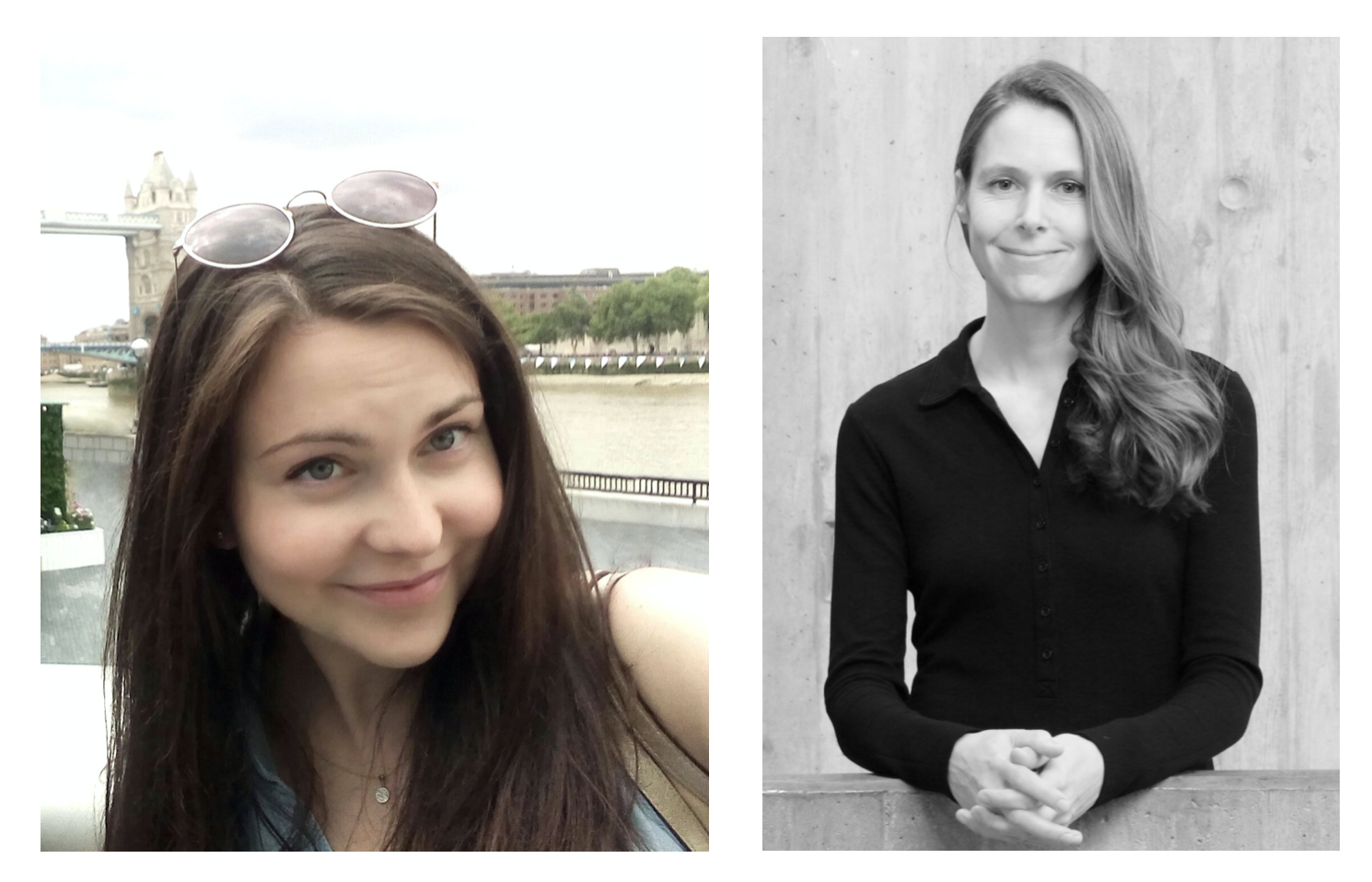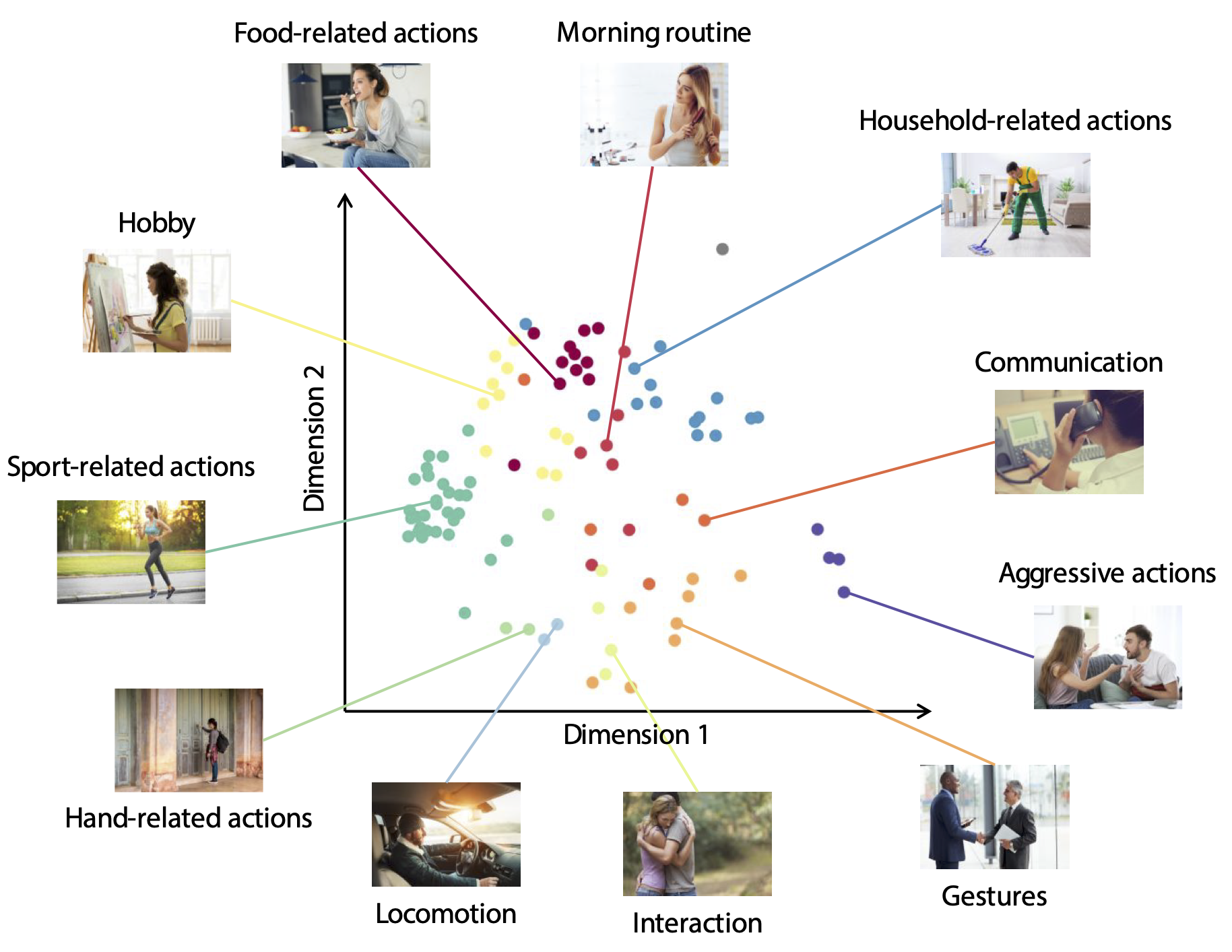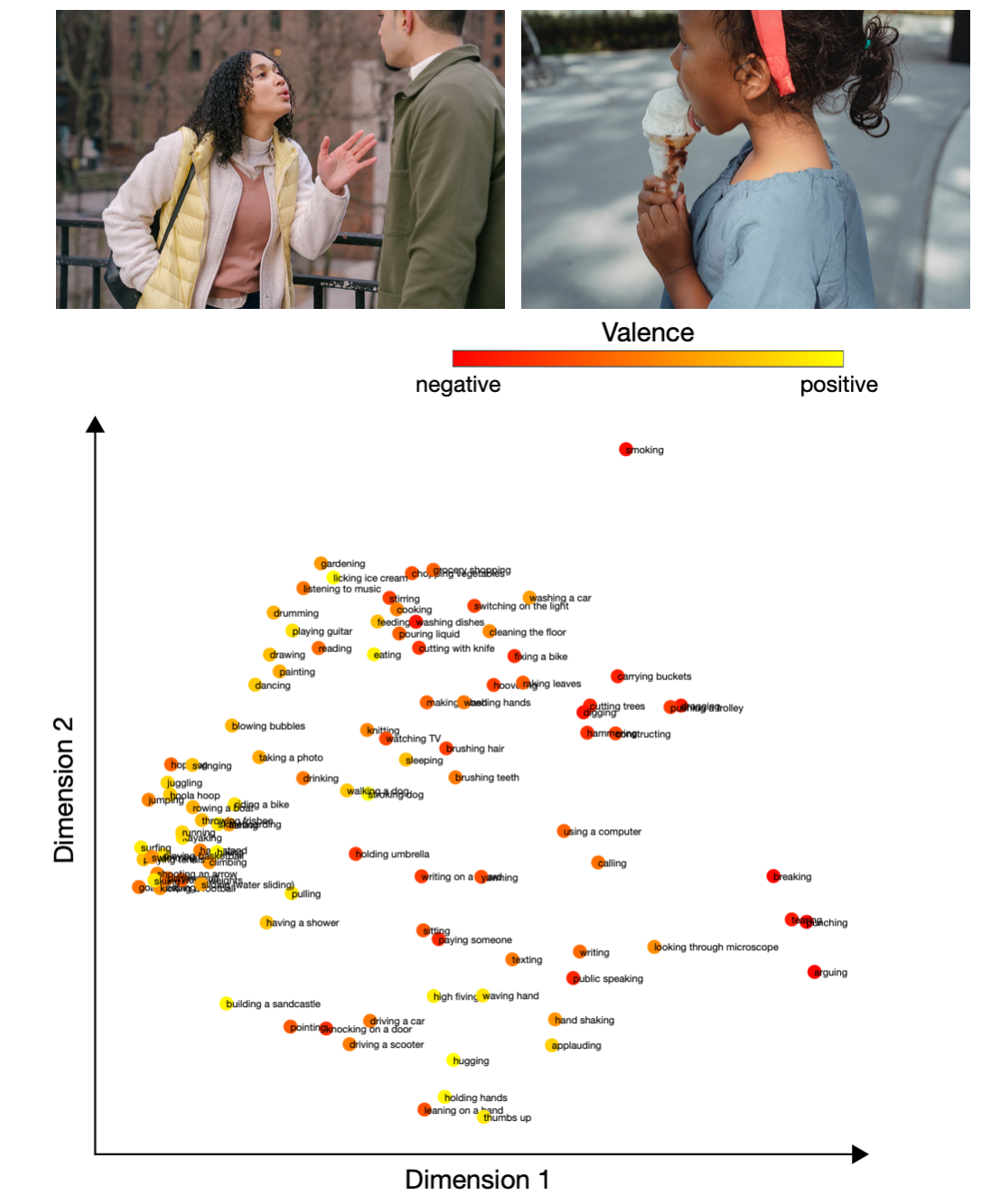If you’re like me, you’ve been busy trying out new hobbies in the last couple of years. Maybe you’ve taken up gardening, sculpting, hiking, or knitting. Or perhaps you’ve taken up a more unusual one: competitive duck herding, extreme ironing, ostrich racing, or worm charming. (Yes, these are all real activities!). But before you run off and get supplies to practice competitive pillow fighting, consider for a moment that these activities are all forms of human action, and we’re capable of a remarkable range of them!
How is it that we’re able to separate actions, like chopping vegetables, painting, and drinking into distinct activities? (I don’t recommend trying all of these at once). How is playing golf different from playing guitar? It may seem obvious that these actions are distinct, but your brain must somehow categorize them into different activities. Or to take another example, consider the picture below. All of these look very different, but they still can be categorized as examples of climbing. How do we mentally group these actions as being the same, but also different from some other action, like running?

In a recent paper published in Behavior Research Methods, a Psychonomic Society journal, Zuzanna Kabulska and Angelika Lingnau (pictured below) investigated the answers to these questions. They conducted a series of experiments aimed at determining the principles of how we organize the rich, complex, and varied actions that we encounter.

To do this, they first conducted an experiment to see how people categorize different types of actions. Participants were given a set of pictures and were instructed to arrange them based on the similarity of the actions they depicted, by dragging-and-dropping the images on a screen. The authors then used their responses to identify a set of broad action-related categories (shown below), which included things like locomotion, communication, food-related actions, sports, etc.

As shown by this diagram, the results offer a fascinating look at how we group different actions together. But what sort of information do participants use to perform this categorization, and what features distinguish one category from another? What distinguishes sport-related actions like kicking a football, surfing, or playing tennis from food-related ones like cooking, pouring liquid, or eating? One might say, for example, that food-related actions often take place indoors and involve your hands and mouth. Sport-related actions are usually outdoors, and involve moving your upper and/or lower limbs, and maintaining your balance.
To look at this more systematically, Kabulska and Lingnau gave participants the same list of 100 actions they used in the first experiment, and asked them to identify the features that are typical for the action. For example, when given the action ‘fishing’, you might say that it takes place outdoors, requires water, lasts a fairly long time, and tends to take place at certain times of the year. The authors then used participants’ responses to identify the action features that were used to describe these actions. The features included things like contact with others (does it involve contact with another person?), duration (what is the duration of the action?), and location (does the action take place indoors or outdoors?).
The authors then gathered a set of ratings for each action to see how these individual features (like duration, movement of different limbs, contact with others, etc.) contribute to action categorization. What can we take away from this? Interestingly, the valence of the action – whether it evokes a positive or negative emotion – contributed the most to distinguishing between these different action categories. Some actions, like building a sandcastle, hugging someone, or licking an ice-cream evoke strong positive emotions. Other actions, like arguing, punching, or breaking an object evoke negative emotions. These differences turn out to be important when we’re categorizing an action!

Together, this work highlights the importance of using data-driven science to understand how we make sense of the different types of actions we see. It also has many applications. For example, understanding how we categorize actions provides an important basis for future neuroscience research to look at how different brain areas might represent these different actions. This information could also be used in the future to make better automated action-recognition systems. Consider an autonomous vehicle, for example. It may need to decide whether the pedestrian on the sidewalk is about to cross the street, or simply standing there enjoying an ice cream. A better understanding of how humans categorize these different actions could be used to improve machine performance.
So next time you take up a new activity (toe wrestling anyone?), think about the richness and complexity of the actions we encounter.
Psychonomic Society article featured in this post
Kabulska, Z., Lingnau, A. (2022). The cognitive structure underlying the organization of observed actions. Behavior Research Methods. https://doi.org/10.3758/s13428-022-01894-5
